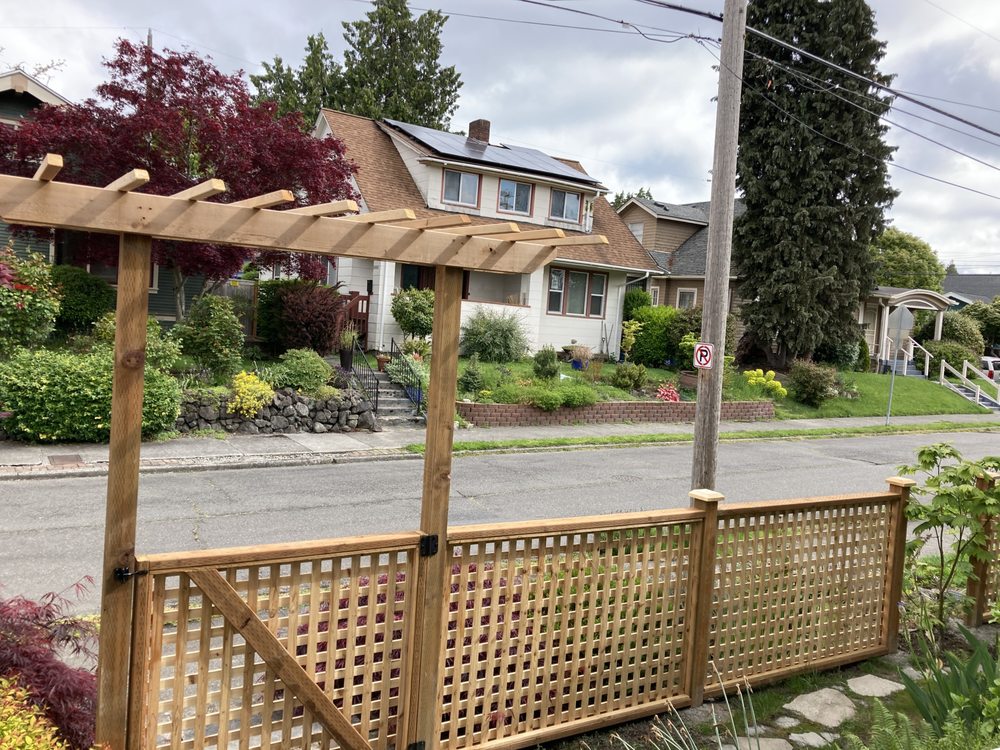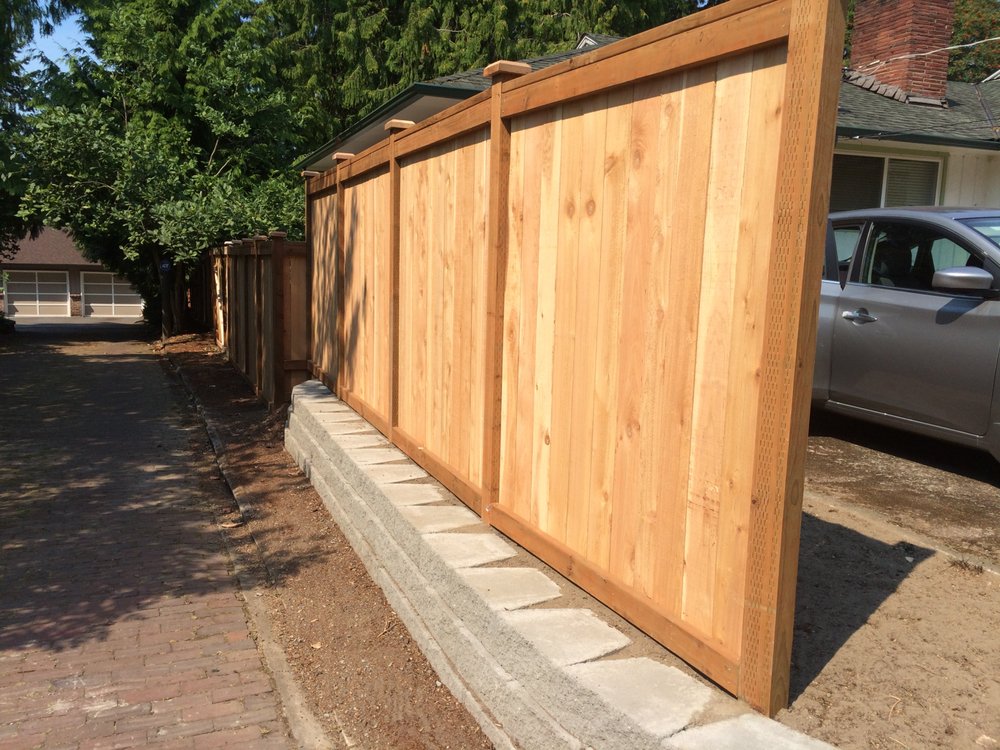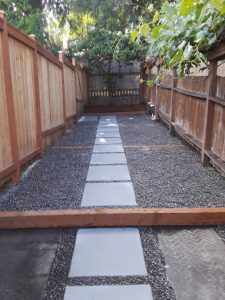DIY Fence Repair: Tips, Process, and Benefits of Hiring a Contractor
Fences are an important part of your property, providing security, privacy, and enhancing your curb appeal. Over time, fences can suffer from weather damage, wear and tear, or even accidents. While repairing a fence on your own can be rewarding, it also comes with challenges. In this article, we’ll explore essential DIY fence repair tips, the entire process, and the benefits of hiring a professional contractor.
Top Tips for DIY Fence Repair
1. Inspect the Fence Thoroughly
Before you begin any repairs, thoroughly inspect the fence. Look for common issues like loose boards, rust, or rotting wood. Pay special attention to the stability of fence posts and foundations, particularly if your area has experienced storms. A solid inspection ensures you address all the problems and prevent future damage.
2. Gather the Right Tools and Materials
Make sure you have the necessary tools and materials to complete the repairs:
- Basic Tools: Hammer, nails or screws, saw, drill, level, post hole diggers, pliers.
- Materials: Replacement boards (wood or vinyl), vinyl parts (for vinyl fences), mesh (for chain-link fences), concrete, and paint or stain for finishes.
3. Fixing Broken or Loose Fence Boards
Here are the techniques for repairing different types of fences:
- Wooden Fence: Replace damaged boards with similar ones. Use exterior-grade wood screws or nails to secure the boards in place.
- Vinyl Fence: Use replacement panels for large cracks or apply vinyl adhesives for smaller cracks.
- Chain-Link Fence: For bent sections, use pliers to straighten the mesh or replace damaged sections entirely.
4. Strengthening Wobbly Fence Posts
Wobbly posts can weaken the entire structure. Here are two methods to stabilize them:
- Reinforce with Concrete: Dig around the post, add gravel, and fill the hole with concrete. Reset the post into place and let it set.
- Use Metal Brackets: For a quicker solution, stabilize the post by securing it with metal brackets to prevent further wobbling, without the need to dig.
5. Additional Fence Maintenance
Proper maintenance can extend the life of your fence:
- Treat and Prevent Rust: For metal fences, sand down any rust and apply rust-preventive primer and paint. Use weather-resistant coatings to help prevent rust from reappearing.
- Repair Gates and Hinges: Tighten any loose hinges and replace broken latches or misaligned sections to ensure your gates function properly.
6. Sealing and Staining Wooden Fences
To protect wooden fences from the elements, you should seal or stain them every 2-3 years using a weather-resistant sealant. This will help prevent moisture damage and maintain the appearance of the wood.
7. Prevention of Further Damage
Taking steps to prevent damage can save time and money in the long run:
- Trim Vegetation: Keep bushes, vines, and trees trimmed back from the fence. Overgrown vegetation can cause the fence to become damaged or weakened.
- Install Fence Caps: Adding caps to the tops of wooden posts can protect them from water damage and prevent rotting.
8. Ensuring Proper Alignment
It’s important to ensure your fence stays aligned as you make repairs. Use a level to check the alignment of posts and rails. A well-aligned fence looks professional and functions properly.
Total Process of DIY Fence Repair
Follow these steps to repair your fence:
1. Assess the Damage
Walk along the fence and look for visible damage such as broken boards, wobbly posts, or sagging sections.
2. Plan the Repair
Determine what materials and tools you’ll need for the repair. For example, you may need to replace some boards, re-stabilize posts, or apply rust treatment.
3. Gather Materials and Tools
Collect all the materials (e.g., replacement boards, paint, concrete) and tools (e.g., drill, level, pliers) you need to complete the repair.
4. Fix Broken or Loose Boards
Replace or re-secure any loose or broken boards using the appropriate materials for your fence type.
5. Reinforce or Replace Posts
Stabilize any unstable posts with concrete or metal brackets to ensure the fence remains secure.
6. Address Sagging Sections
If sections of the fence are sagging, reinforce the posts or rails and tighten any loose screws or nails.
7. Apply Finishing Touches
Seal, paint, or stain any wooden sections to protect against weathering. For metal fences, repaint any rusted areas.
8. Clean Up and Inspect
Clear away any debris and inspect the fence to ensure all repairs are secure and that the fence is functioning as it should.
Benefits of Hiring a Contractor for Fence Repair
While DIY fence repair can save money, hiring a professional contractor offers many advantages:
1. Expertise and Experience
Contractors bring years of experience and knowledge to the table. They can identify underlying issues and perform high-quality repairs that will last.
2. Efficiency and Time-Saving
Professionals work quickly and efficiently, saving you valuable time. They’ll complete the job properly without having to go back and fix mistakes.
3. High-Quality Results
Contractors ensure that the fence repair is done right the first time, providing high-quality results that will last longer and require less future maintenance.
4. Safety
Contractors are trained to perform repairs safely, reducing the risk of injury. They also ensure the fence is structurally sound and secure.
5. Cost-Effective in the Long Run
By hiring a contractor, you avoid costly DIY mistakes and material waste. Professionals get the job done right, saving you money on repairs in the future.
6. Customized Solutions
A contractor can offer tailored solutions for your fence, considering your fence type, the extent of damage, and your aesthetic preferences.
7. Avoid Legal Issues
Contractors ensure that your repairs are in compliance with local regulations and that the work is done in accordance with any property boundaries. This can help you avoid future disputes.
8. Warranties and Guarantees
Reputable contractors often provide warranties for their work, offering you peace of mind in case any issues arise after the repair.
Final Thoughts
DIY fence repair can be a rewarding project if done correctly, but it requires the right tools, materials, and time. For homeowners who want high-quality, efficient repairs without the stress or risk of mistakes, hiring a professional contractor is a smart choice. Whether you’re fixing loose boards, reinforcing posts, or treating rust, a professional can ensure that your fence remains secure, attractive, and functional for years to come.

Ready to start?
DIY fence repair is a great option for homeowners with the time, tools, and know-how to tackle the task. By following essential tips such as using the right tools, addressing damaged posts, and sealing wooden fences, you can extend the life of your fence and keep it looking great. However, for more complex repairs or large-scale fence issues, hiring a contractor can save time, ensure a professional finish, and even prevent costly mistakes. Whether you choose to DIY or hire a pro, maintaining your fence is an important part of keeping your property secure and attractive.



















